HEARST BOOKS and GOOD HOUSEKEEPING are registered trademarks and the distinctive Hearst Books logo is a trademark of Hearst Communications, Inc.
2018 Hearst Communications, Inc.
All rights reserved. No part of this publication may be reproduced, stored in a retrieval system, or transmitted in any form or by any means (including electronic, mechanical, photocopying, recording, or otherwise) without prior written permission from the publisher.
ISBN 978-1-61837-247-5
The Good Housekeeping Cookbook Seal guarantees that the recipes in this publication meet the strict standards of the Good Housekeeping Research Institute. The Institute has been a source of reliable information and a consumer advocate since 1900, and established its seal of approval in 1909. Every recipe in this publication has been triple-tested for ease, reliability, and great taste by the Institute.
Hearst Communications, Inc. has made every effort to ensure that all information in this publication is accurate. However, due to differing conditions, tools, and individual skills, Hearst Communications, Inc. cannot be responsible for any injuries, losses and/or damages that may result from the use of any information in this publication.
For information about custom editions, special sales, and premium and corporate purchases, please contact Sterling Special Sales at 800-805-5489 or .
goodhousekeeping.com
sterlingpublishing.com
Cover design by David Ter-Avanesyan
Interior design by Sharon Jacobs
For photography credits, see
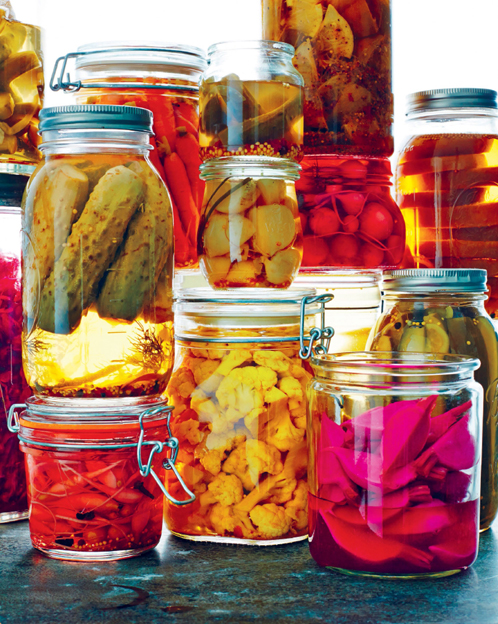
Foreword
Canning jars have certainly proved that they are multitaskers. Theyre a Pinterest phenomenon shown holding everything from flowers and cookie mixes to trifle andtheir original usepreserved food. Yes, interest in canning and preserving is on the rise!
Seeing cases of canning jars stacked up at the local supermarket gets me plotting. What does your weekend look like? The canning process may seem a tad daunting at first, but it doesnt require any special equipment except patience. This is a method you can jump into for one hour or a few. If youre a first-timer, you may want to start with a batch of skillet jam or refrigerator pickles. Or you can set aside an entire morning and put up a batch of fresh-from-the-farm (or farmers market) preserves.
Canning is all about preserving the flavors of the seasonal foods we love: local berries, tender cucumbers, ripe tomatoes, and so much more. You can capture the flavors of the harvest in a jam or mix things up with relishes, chutneys, and fruit butters. And we give you some recipes to use them in as well! Im thrilled to share this collection of Good Housekeeping recipes with you.
Let this book be your essential guide to the kitchen craft. Good Housekeeping Canning & Preserving begins with a thorough introduction that highlights important equipment and procedures along with numerous triple-tested, small-batch recipes. These include healthful and homemade jams, jellies, chutneys, compotes, marmalades, pickles, and sauerkrauts, and they all pack huge flavor in small jars.
Whether you want to make a jam or chutney or savor summer veggies in tangy brine, these recipes will guide you in preserving the freshest flavors of the harvest. Now when Im craving the taste of juicy summer strawberries, I can simply pop open a jar of preserves. Voilsummer is served!
Looking for something sweet? Smear Peach-Honey Jam ().
Along with essential canning recipes, weve included these sweet and savory components in everyday cooking. Peach JamGlazed Chicken () are even more special when you make the jam, too.
So what are you waiting for? Check out what looks good in your market and whip up a batch of seasonal favorites. Happy canning!
SUSAN WESTMORELAND
Food Director, Good Housekeeping
Introduction
Today, most people process fruits and vegetables because they enjoy it, not because they have to. The fruits and vegetables for homemade pickles, jams, preserves, and jellies can come from an urban farmers market or the garden out back. Canning and preserving offer satisfying pleasures. Nothing produced commercially equals the quality or flavor.
Equipment for Canning Fruits & Tomatoes
BOILING-WATER-BATH CANNING POT
If you plan on doing a lot of canning, you may want to purchase a canning pot. It comes with a basket to hold the jars and a tight-fitting lid. However, any large stockpot will do, as long as it is deep enough that the pots rim is 3 to 4 inches above the tops of the jars (as they sit on the wire basket or rack) and large enough that the jars dont touch each other. Instead of a wire canning basket, you can use any sturdy heatproof rack that will fit in the pot; round wire cooling racks work well. If your improvised rack needs a little extra support to hold heavy jars, place several metal jar bands underneath the center of the rack.
JARS Tempered glass canning jars, sometimes called Mason jars, are the only recommended jars for home canning. Their special two-piece lids ensure a vacuum-tight seal that discourages spoilage. Also, the specially treated glass will keep them from cracking when theyre subjected to extreme temperatures. If you plan to put your jars in the freezer, buy the ones with straight or tapered sides; jars with shoulders dont work in the freezer. Jars range in size. Use the size recommended in the recipe, especially for hot-water-bath canning; if you use larger jars than recommended, the heat that kills harmful microorganisms may not penetrate all the way through the food, or preserves may not set up properly. Wide-mouthed jars are easier to fill than narrow ones. The jars are reusable, but check them carefully beforehand for any signs of wear, like cracks or chips.

CAPS The most common cap is made of two pieces: a flat lid with a rubberlike sealing compound on the underside and a metal screw band that holds the lid in place during processing. The lids are not reusable. Undamaged screw bands, however, can be reused.
UTENSILS FOR CANNING


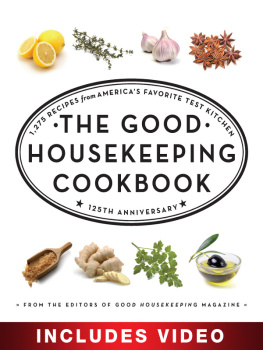

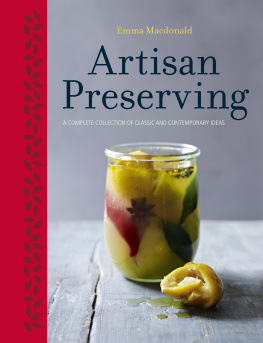
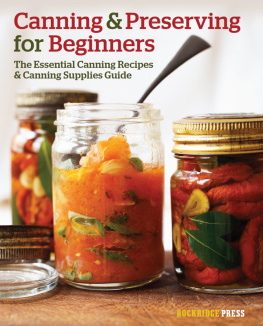
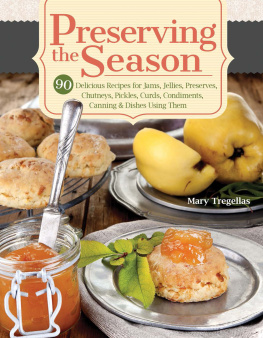
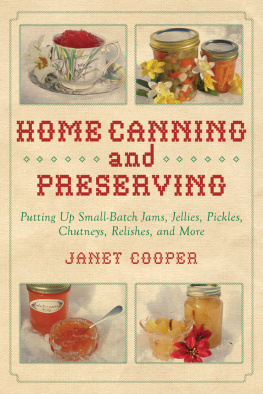
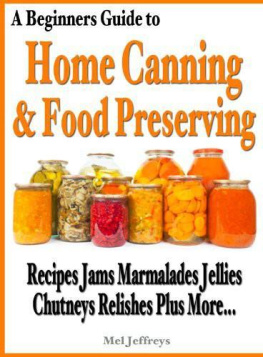
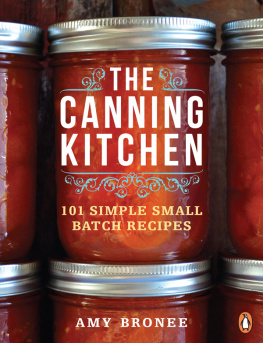

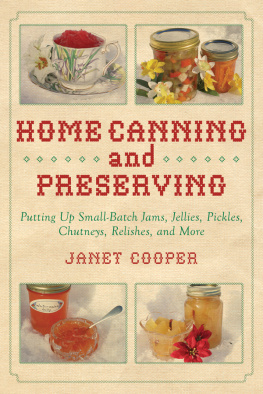
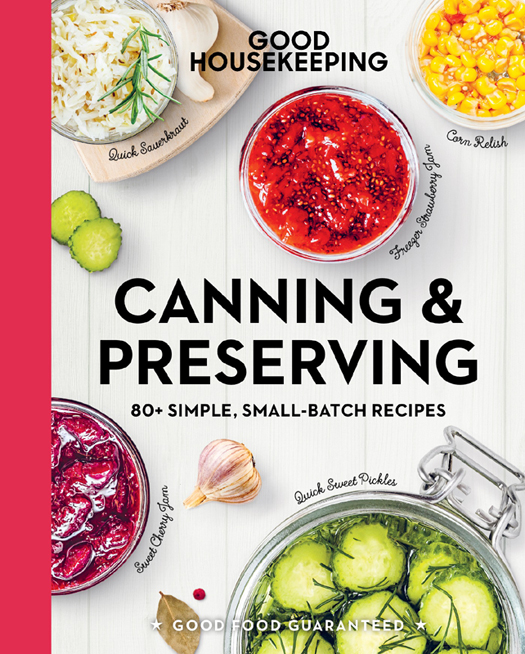

 GOOD FOOD GUARANTEED
GOOD FOOD GUARANTEED



